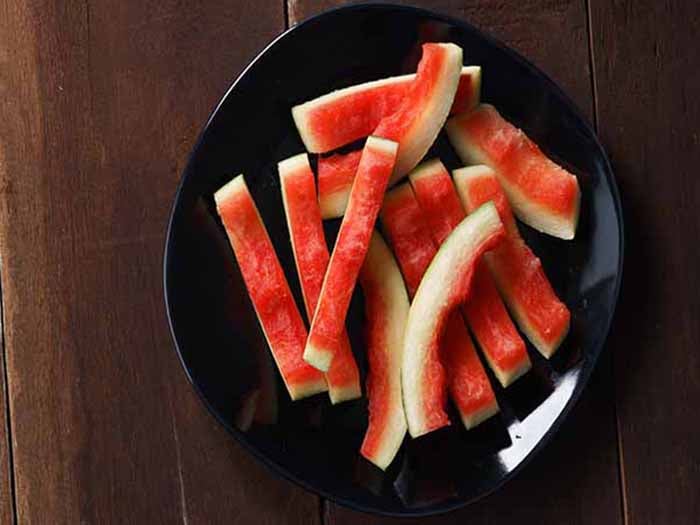Most people discard their watermelon rind as soon as they eat the delicious fruit inside, but considering what a dense source of nutrients that rind represents, you might want to save the rinds and add them to your diet!
What is Watermelon Rind?
Watermelon rind is the tough, outer layer of a watermelon, and is typically green on the exterior, fading to a pale white inside, before giving way to the red and pink flesh of the fruit itself. This rind is decidedly harder and less juicy than the fruit it protects, but contrary to what many people think, it is completely edible. However, simply chomping down on the watermelon rind may not be the tastiest or most effective way to enjoy this part of the fruit.
The rind of this fruit contains a large percentage of the nutrients within the entire fruit, yet most people simply throw the rinds into the garbage without a second thought. Not only do watermelon rinds contain all the same nutrients as is found in the juicy fruit, but even higher concentrations of certain antioxidants, minerals, vitamins, and active ingredients. This tough rind contains low levels of calories, but high concentrations of vitamin C, vitamin A, vitamin B6, potassium, and zinc, among others. Watermelon rind is also nutrient dense with chlorophyll, citrulline, lycopene, amino acids, and flavonoids and phenolic compounds. [1]

Did you know that people in India make a stir-fry out of watermelon rind? Photo Credit: Shutterstock
Benefits of Watermelon Rind
The most notable health benefits of watermelon rind include its ability to improve the appearance of the skin, strengthen the immune system, lower blood pressure, aid in weight loss, and ensure a safe pregnancy, among others.
Skin Care
With a decent amount of lycopene and other flavonoids, this fruit rind is packed with antioxidants, which can help to reduce the effects of free radicals and lower oxidative stress, which minimizes the appearance of wrinkles, blemishes, and age spots as you get older. [2]
Blood Pressure
This rind has a surprisingly high level of potassium, which acts as a vasodilator, helping to reduce the stress and strain on blood vessels and arteries. This can lower your risk of atherosclerosis, as well as heart attacks, strokes, and coronary heart diseases. [3]
Immune System
With more than 30% of your daily vitamin C requirement in a single serving of this rind (1 cup), it can give a major boost to your immune system, since vitamin C helps to stimulate the production of white blood cells, the first line of defense against infections and foreign pathogens in the body. [4]
Weight Loss
This non-traditional, low-calorie snack can aid in weight loss efforts because of its dense fiber content. This can help you feel full, while also stimulating the metabolism, and thus increasing your passive fat-burning capacity to help you shed some of those pesky pounds. [5]
Pregnancy
Some studies have found that the natural sugars found in this rind can help to minimize symptoms of morning sickness, as well as some of the swelling associated with pregnancy, thanks to the high potassium content. [6]
Libido
This rind is associated with improving sexual performance, thanks to its effects on blood vessel constriction, thus allowing better blood flow to your intimate areas, thus increasing your sexual performance and libido with your partner. [7]
Chronic Diseases
Lycopene and citrulline in this rind can help to neutralize free radicals before they can cause cellular mutation and lead to chronic disease. [8]
How to Use Watermelon Rind?
As mentioned, the tough and fibrous consistency of the watermelon rind makes it less than appealing as a snack. However, you can prepare the watermelon in smoothies and jams, and you can also pickle the rind for later use! You can blend the rind in a healthy morning shake, or add it to a cider vinegar mixture, along with some other spices, to improve its eventual texture and flavor. Many people also shave watermelon rind into salads or dice the rind into salsa for a fiber-rich and flavorful treat.
